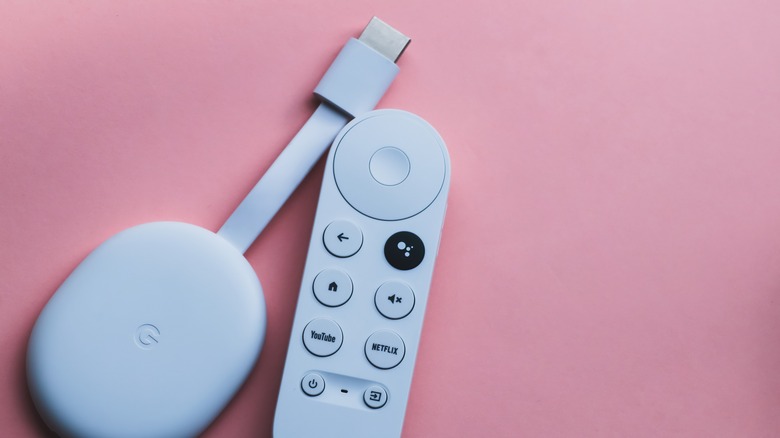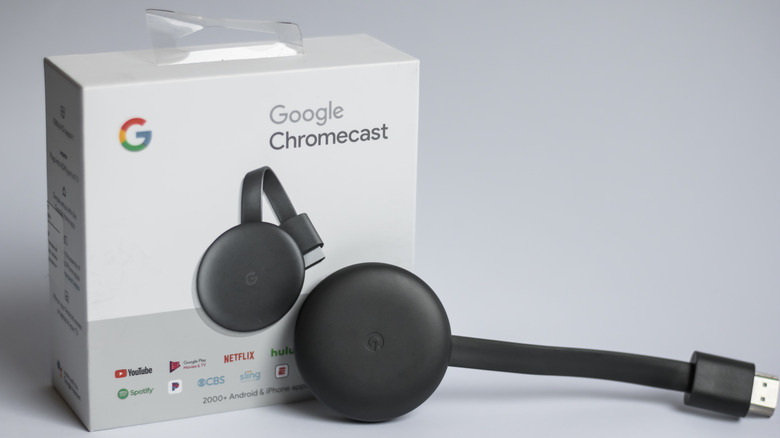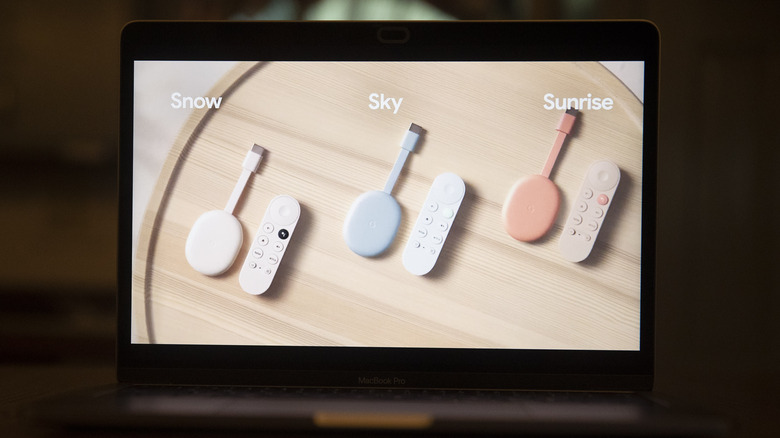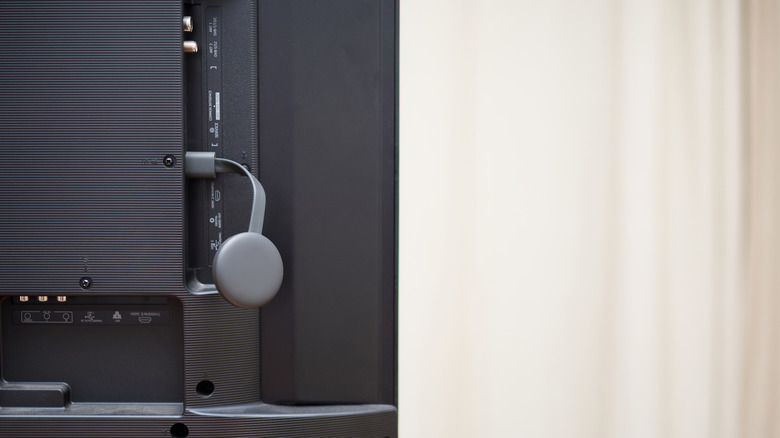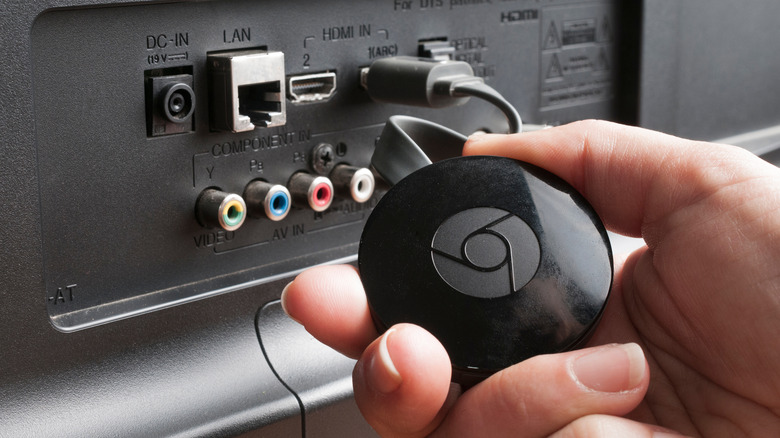How To Free Up Storage On Your Google Chromecast (And Why You Should)
With a Chromecast, you can stream content from your favorite streaming platforms with ease. However, it's possible that you run out of storage space after months of regular use, especially if you're the kind to use your Chromecast in unexpected ways.
While the Chromecast with Google TV comes with 8GB internal storage, only around 4GB can be used for apps. Although 8GB is the standard storage size for many other entry-level streaming devices, some companies offer larger storage options right off the bat. For example, the Amazon Fire TV Stick 4K Max launched with a whopping 16GB storage in 2023, which is twice as much as its predecessor.
Although the exact number of apps you can download on your Chromecast varies, some users have reported having less than 10 apps on it before it refuses to let them download more. For people who love their movies or TV series, this could barely be enough to cover all your favorite streaming platforms. In addition, the space taken up by system storage may even increase as your Chromecast firmware updates with time.
Thankfully, it's very easy to make more room for a faster and smoother viewing experience. Here are some ways to free up your Google Chromecast storage and why you should.
How to delete apps on Chromecast
One of the most straightforward, but not necessarily ideal, ways to clear your Chromecast storage is to delete existing apps. In fact, most Android TV OS apps take up an average space of 50 to 100MB. If you're in a hurry and want to continue your show in peace, deleting an app is probably the fastest solution.
To delete apps on your Chromecast with Google TV storage, navigate to the right side of your Google TV screen and select Settings. Next, click Apps > See all apps. Then, you can choose what apps you no longer want to be installed on your Chromecast and click Uninstall. In the pop-up window, click OK to confirm your decision.
However, if you're too attached to your apps and don't want to go through the hassle of re-downloading them, you can try clearing the cache on your Chromecast instead.
How to delete cache on Chromecast
For those deep into the Google ecosystem, Google Home lets you add up to five homes to your account, which is integrated with your Chromecast. If you're lucky enough to have a big family or group of friends who are like family, you can even add a maximum of six people per home. While this is a great way to keep your recommendations personalized across multiple houses, it can take a toll on your Chromecast storage, specifically the cache.
Designed to improve device performance, the cache is typically used by your Chromecast to temporarily store data, files, or information in a more accessible manner. Unfortunately, it can also regularly cause problems, such as lagging or update errors.
With so many hidden features on your Chromecast, it's bound to have some cache issues that you'll need to address at some point. By clearing your Chromecast cache, you can stay logged in to your apps while removing temporary data.
To clear the cache on your Chromecast, go to the rightmost side of your Google TV screen and click Settings. Under General Settings, select System > Storage > Internal shared storage. Next, select Cached data and confirm your choice by clicking OK.
How to use external storage for Chromecast
If you've tried everything else but still struggle to keep your Chromecast from running out of storage space, you may want to opt for a more elaborate solution, such as adding external storage. To integrate your Chromecast with external storage, you will need to find a hub that also has a power delivery port.
Because the Chromecast power supply is designed to cover only its intended power requirements, it may not be able to support an additional USB-C hub. If you choose the wrong USB-C hub, you may get a low-power notification, so you might have to go through a trial-and-error process. To prevent this, Google recommends a USB-C charger that can supply 1.5 A/7.5 W or higher.
Then, you can connect a portable storage device, like a USB stick or SD card. You can use a portable storage device as long as it has a USB 2.0 or greater transfer speed. To stay on the safe side, you can opt for a device with at least a USB 3.0 transfer speed.
Once your USB storage device is connected, you will receive a prompt to reformat it. With this, it's best to make sure you don't have any important data, such as photos or documents, inside your storage device before proceeding.
Unfortunately, if you're big on aesthetics and wire management, this solution might keep you from sleeping at night with how messy it's going to look.
Why clearing your Chromecast storage matters
Aside from being annoying, having full Chromecast storage can also lead to a variety of other issues. While some of these issues can be minor, such as lagging, others can have more severe consequences on your and your family's safety.
For example, if your Chromecast device has full storage, you will not be able to update its firmware. While some firmware updates can simply be to optimize your device, others can be crucial for your overall streaming security. By making an effort to regularly clear your Chromecast storage, you can have a better, safer, and smoother streaming experience for longer.
In recent times, Google has made some strides in increasing its storage capacity. The Chromecast with Google TV (HD) model has around 300MB more free space out of the box than the Chromecast with Google TV (4K) model. However, it still leaves much to be desired, and many Chromecast users can benefit from a few more GBs of extra storage.
